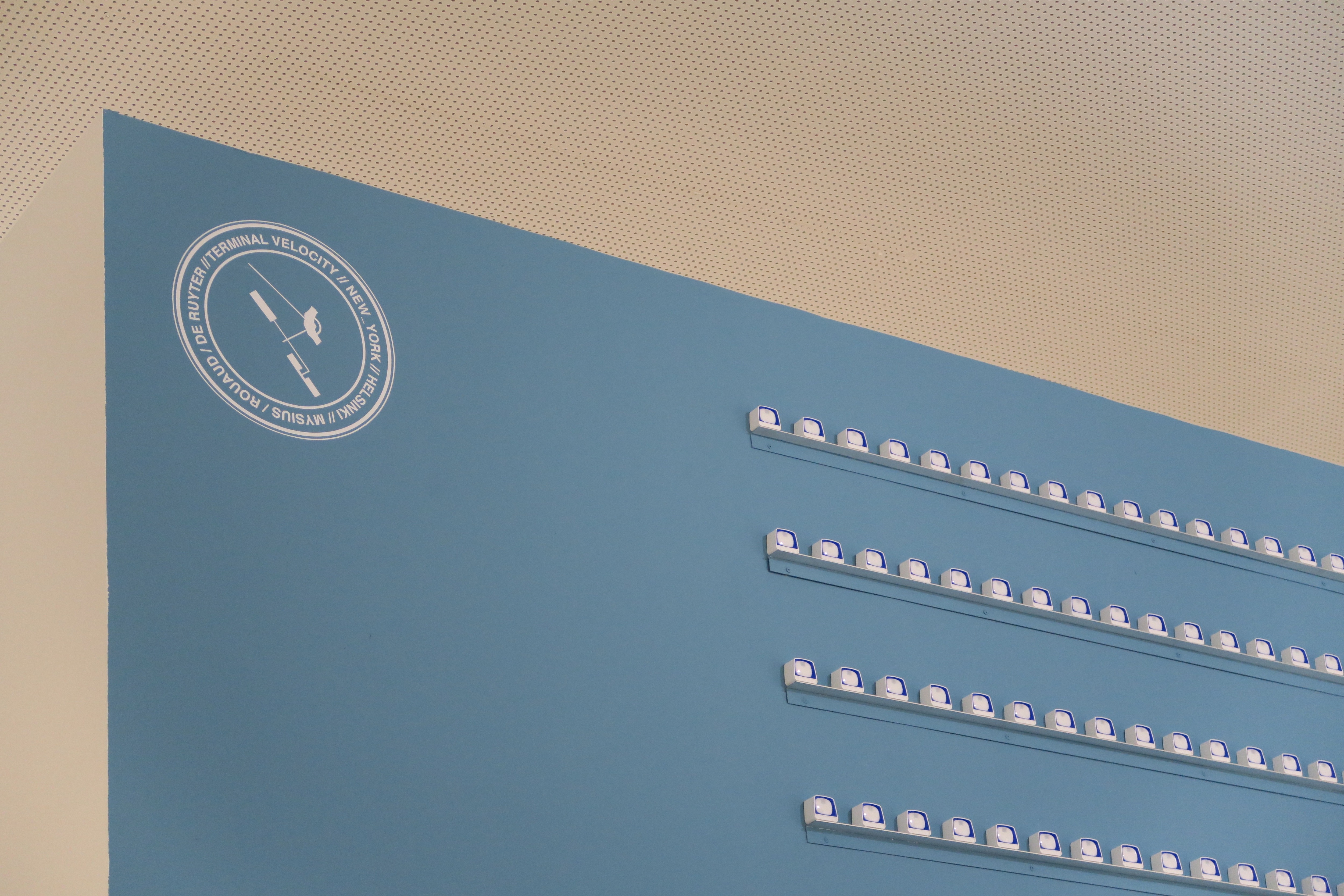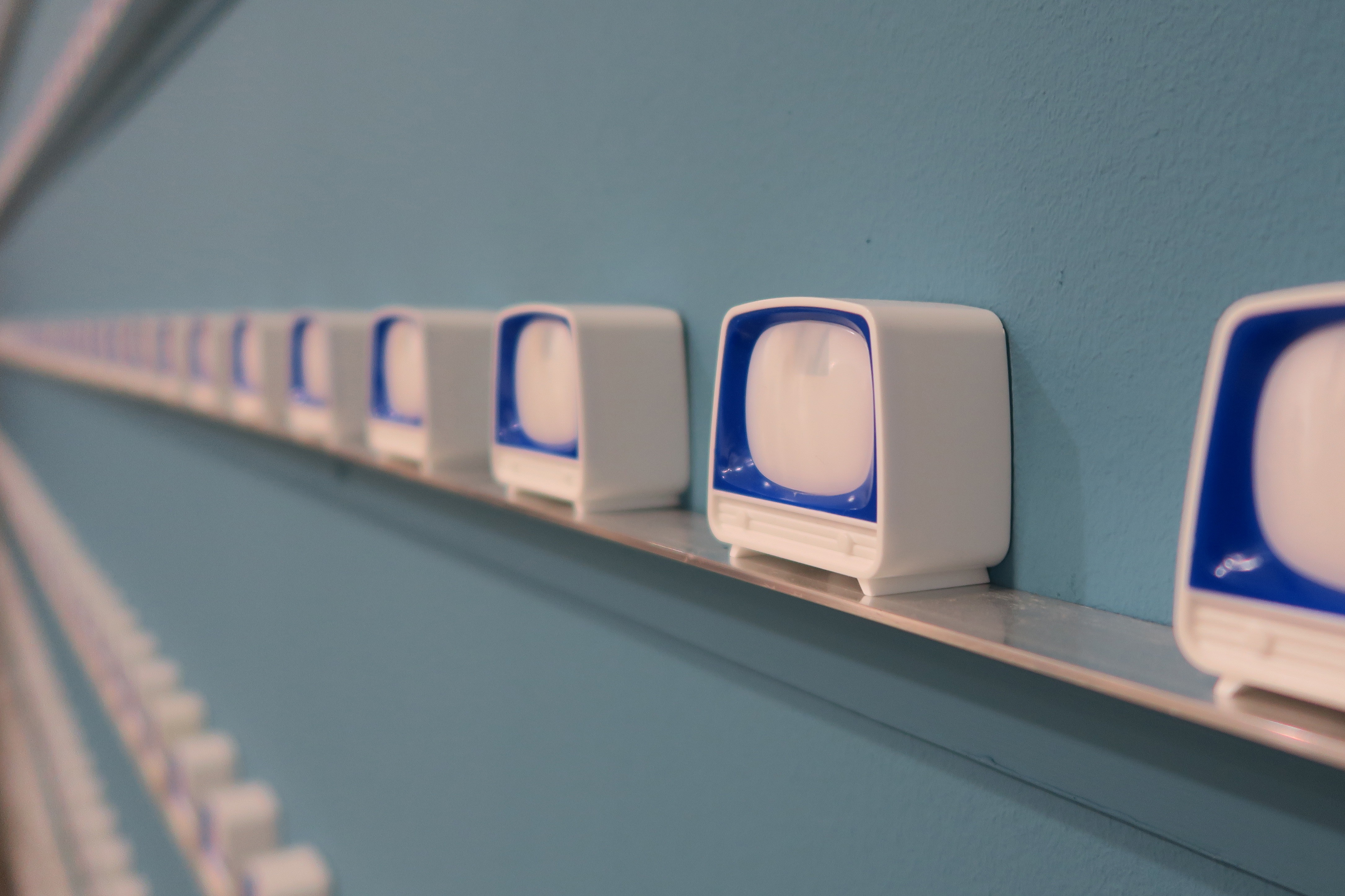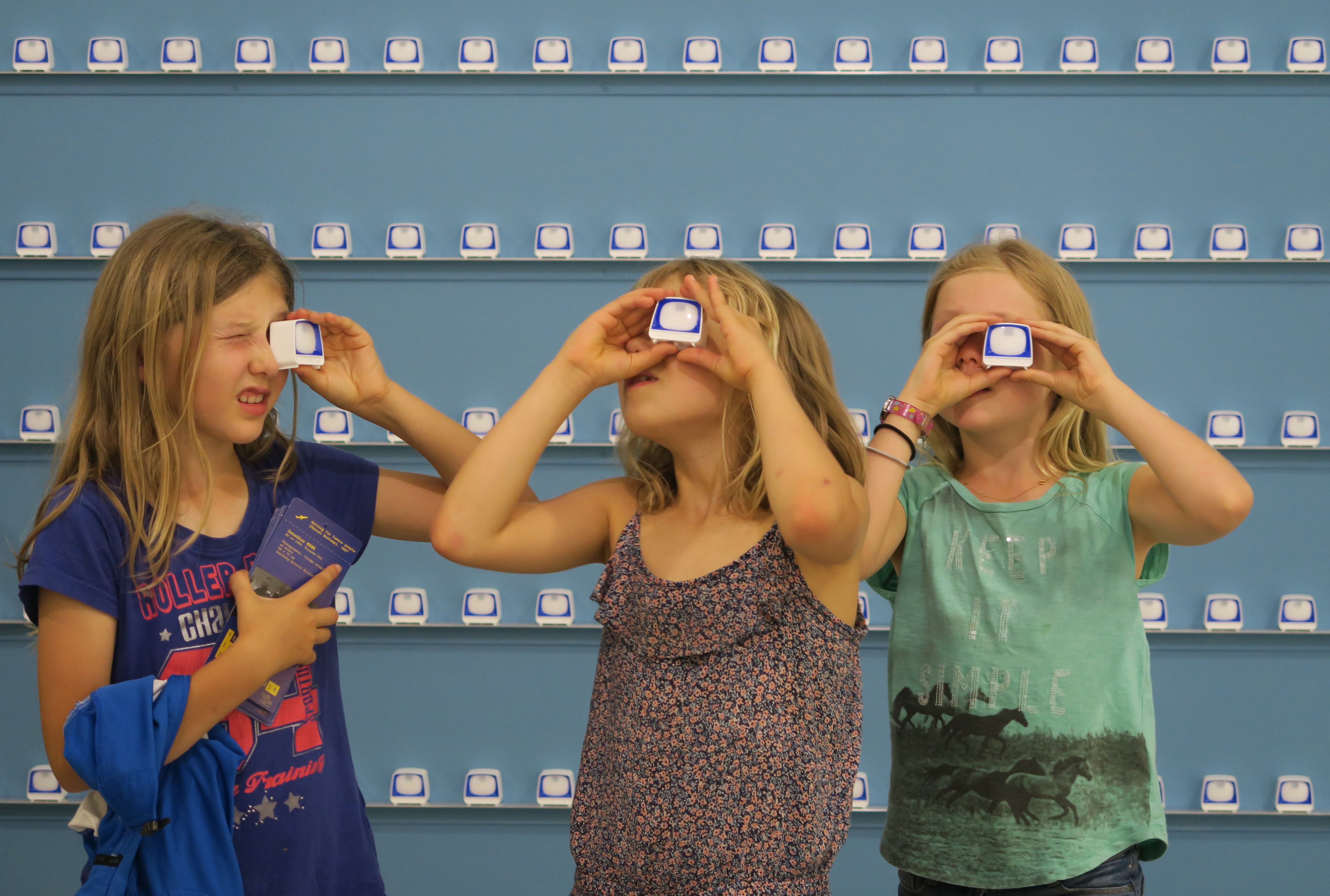TERMINAL VELOCITY
(The Return of the Enfant Prodige)
Organized by the association "the next helskinki", the competition of the same name questions the needs of the capital of Finland for a Guggenheim Museum. A (fictional-)project and narration conceived with Esther Mysius and Camille Rouaud.


Terminal Velocity
After years of hesitations about the future of its South Harbor the City of Helsinki was desperate. They even thought that, if nothing else could come from urbanism, the big machine (of the so-called “cultural industries”) would at least pump blood into the area. But even this idea, faced by the resistance of the inhabitants, failed. Early 2015 Helsinki wondered if the sleeping beauty would ever be woken.
One day a few architects came up with an idea: instead of building something new, why not use an existing iconic construction (afterall, recycling is a great political gesture)? Why not save an architecture by a famous Finnish architect, stranded abroad, suffering from disuse? Bringing home a wonderchild sounded like the perfect scenario.
The Trans World Airlines (TWA) Terminal at the JFK airport was built between 1955 and 1962 by Eero Saarinen. Probably his most famous masterpiece, it is a symbol of organic architecture and represents a naive hope in the future, salvation through technology, and hi-tech transportation. Unfortunately it didn’t fit the news needs and regulations of actual air traffic and was closed in 2001. (Nowadays the terminal is open to the public but without any prestige).
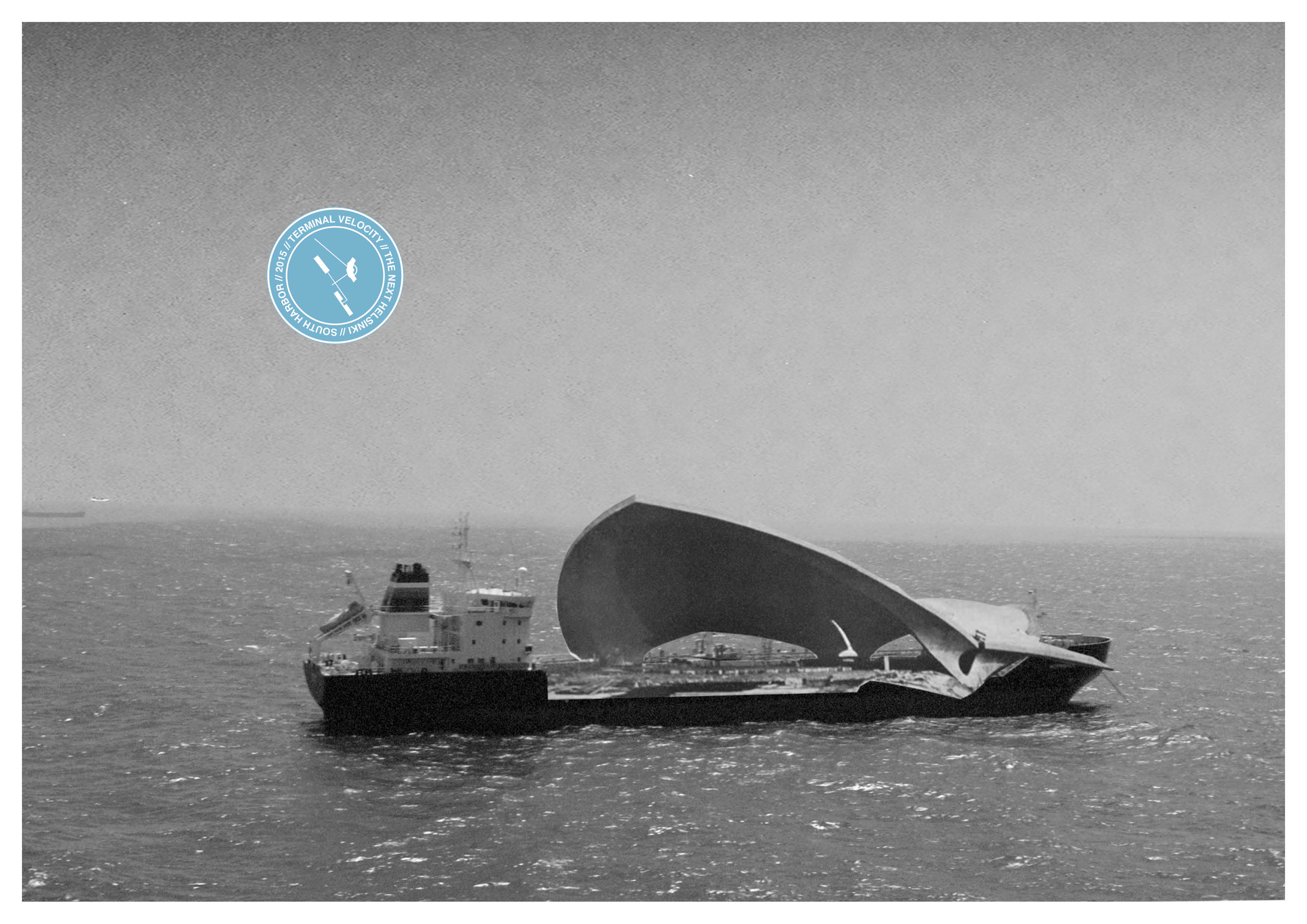
All the Finnish ship companies united to create (and sponsor) a special boat able to carry the building across the Atlantic. Luckily the TWA Terminal in New York is only 1,6 kilometers away from the seashore and it softly reached the ocean for its trip on a sunny monday morning.


The arrival of the Terminal in the Helsinki South Harbor was celebrated like the return of the Enfant Prodige. Fireworks were let off and Justin Bieber played new compositions which he dedicated to the building. The spectacular architecture has since floated in the harbor, bringing him into a weird connection with the Sidney Opera House where Eero Saarinen was an essential figure in the competition.
The existing site remain untouched and the original hangars are used to connect the Terminal with the shore and hosts an art center. The three main buildings on the West side of the South Harbor (Makasiini Terminal M4 and Olympia Terminals M3 and M1) become respectively an exhibition hall of 10.800 square meters, a giftshoft, and a conference hall of 2.000 m2 plus offices (approx. 2.600 m2) for an institution while the TWA Terminal is used for boats and becomes a spectacular restaurant and foyer hosting parties with a wonderful view over the Suomen Linna islands.
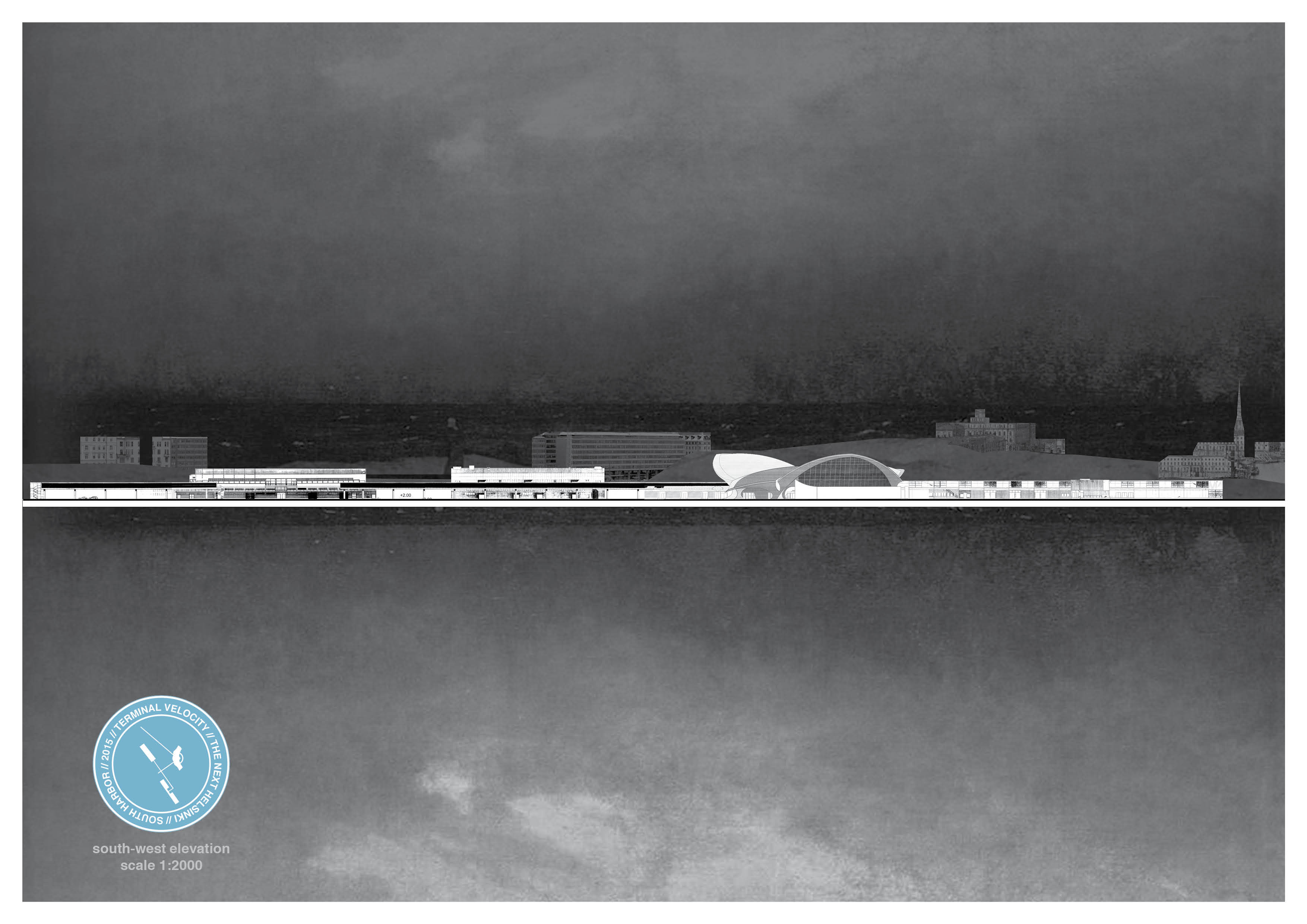
What was once the “effet Beaubourg” (Baudrillard, 1977) followed by the “effet Bilbao” (1997) soon became the “effet Helsinki” (2015). Many cities started to move unused landmark buildings and to re-use them for cultural purposes. The starchitects were observed to be losing bit by bit their influences and power on the construction of art institutions.


Post-scriptum: in 2016, the project was exhibited in La Panacée, Montpellier, in the frame of the exhibition Terminal P.
On that occasion, we produced 1.000 vintage mini-televisions containing the images produced for the competition.
![]()
![]()
![]()
![]()
The next Helsinki
Ideas competition organized by Checkpoint Helsinki, Terreform and G.U.L.F. (Global Ultra Luxury Faction), Helsinki
Project entry: Thibaut de Ruyter, Esther Mysius & Camille Rouaud
The next Helsinki - official website & online exhibition
